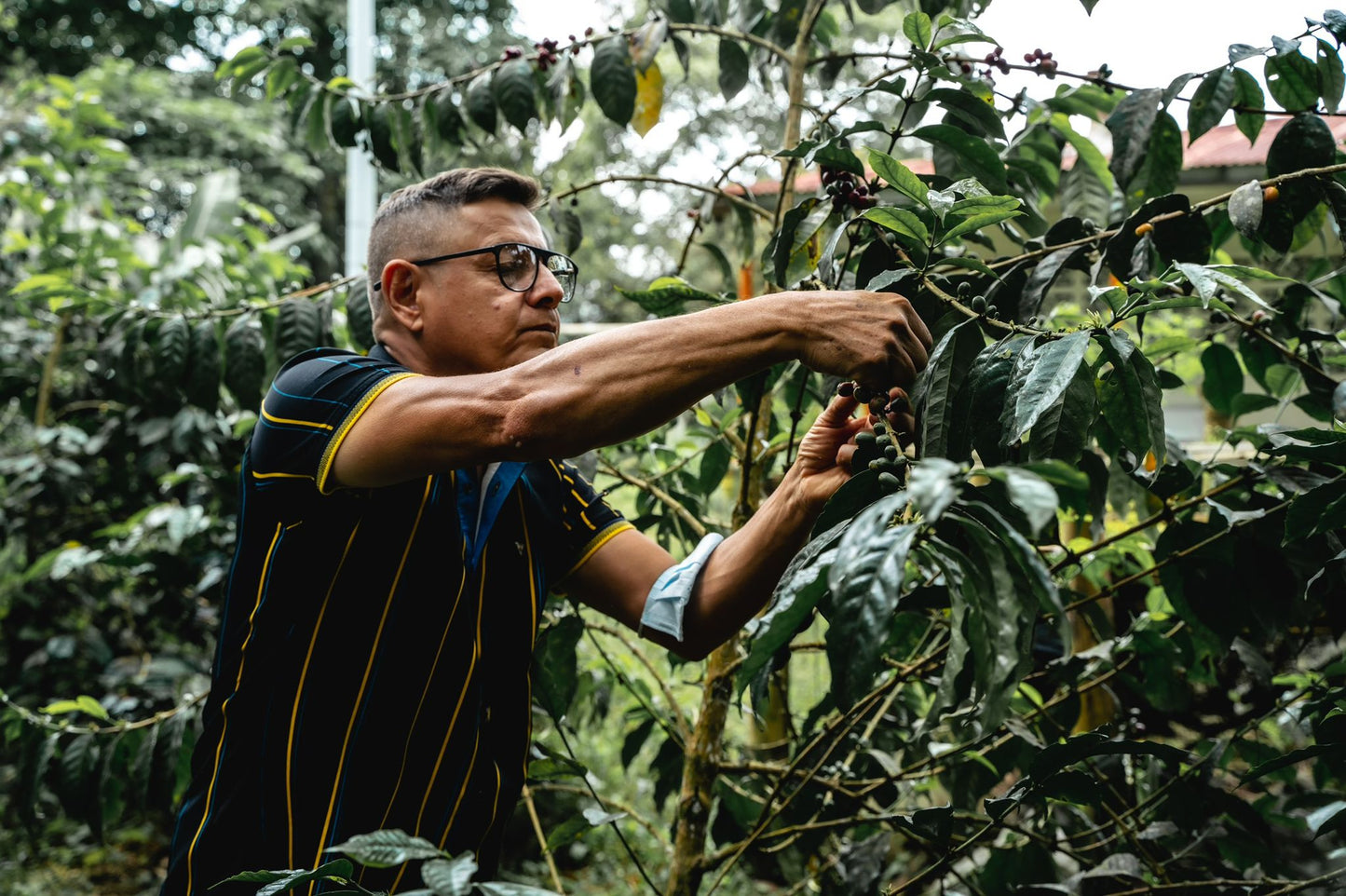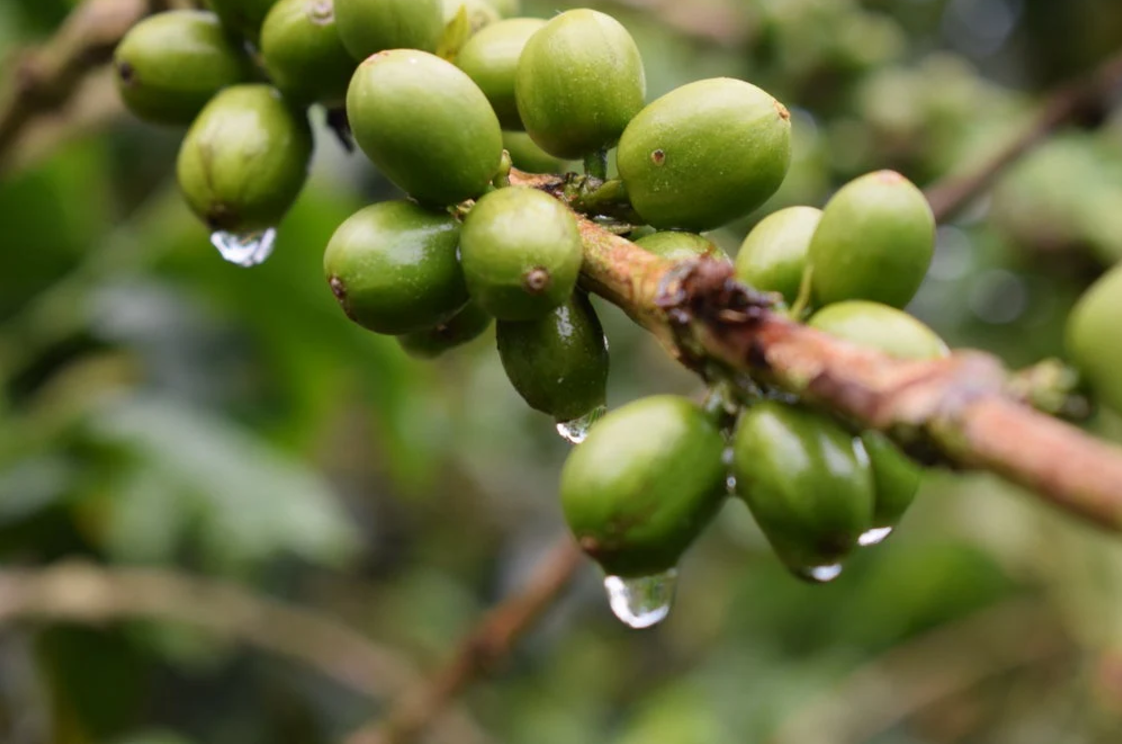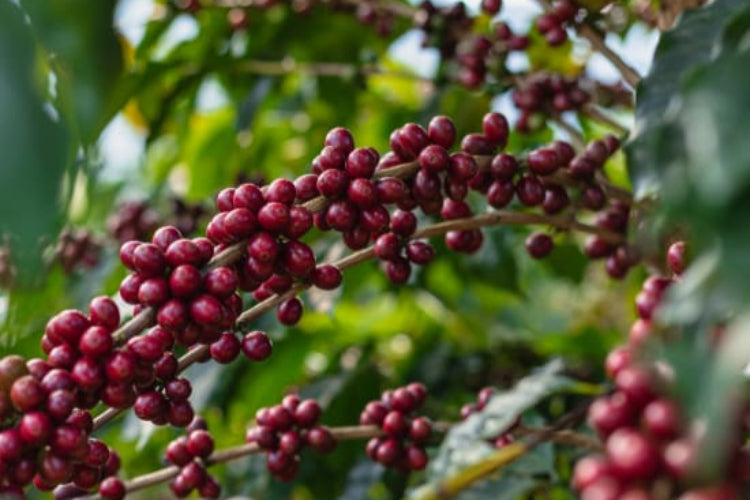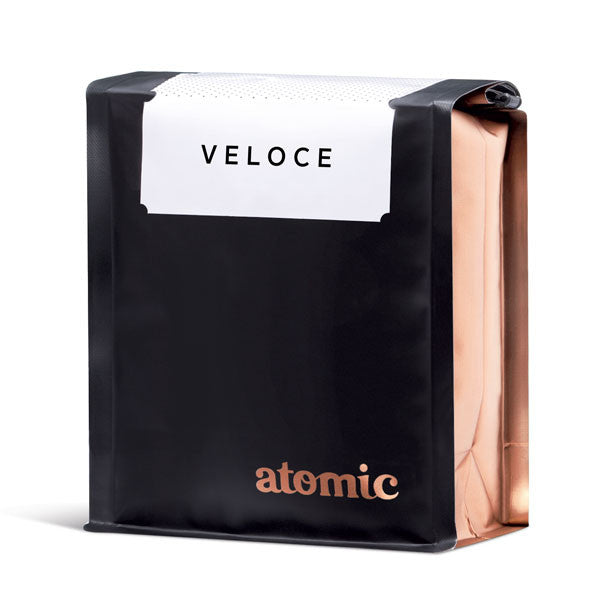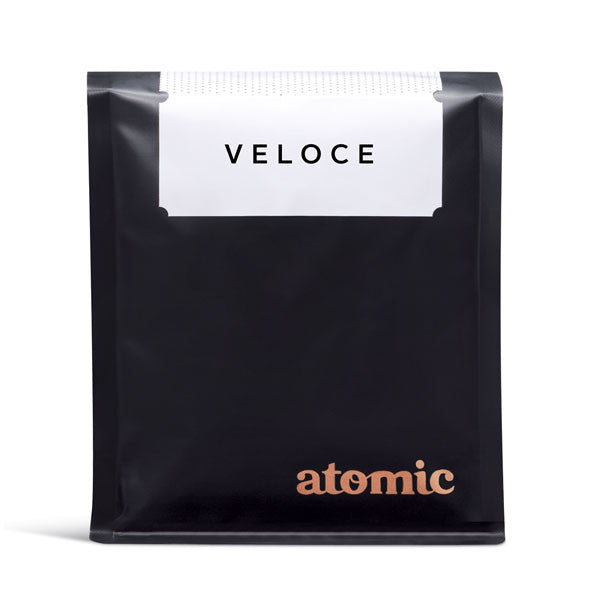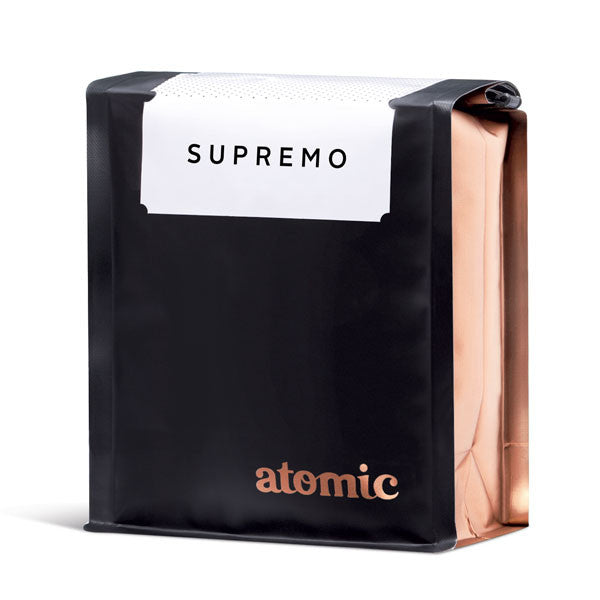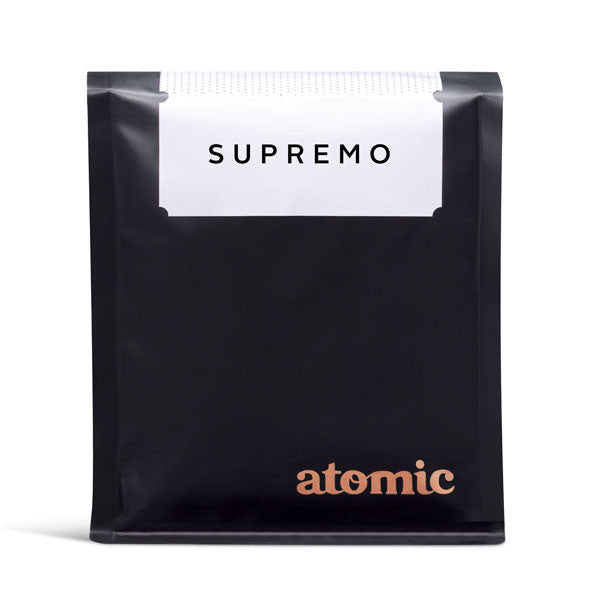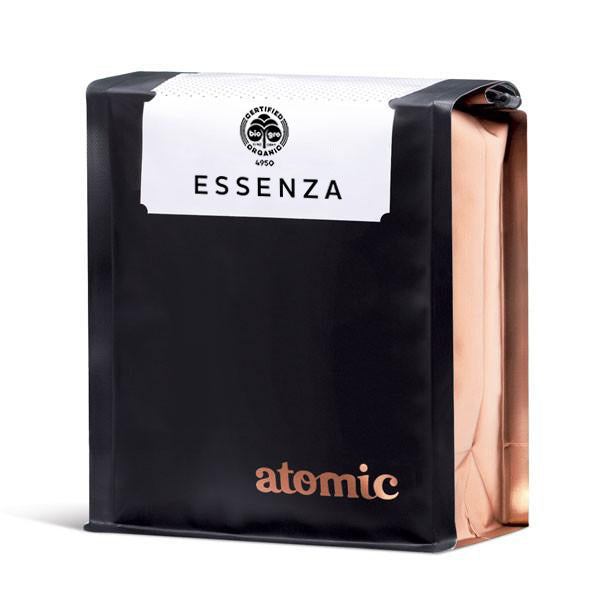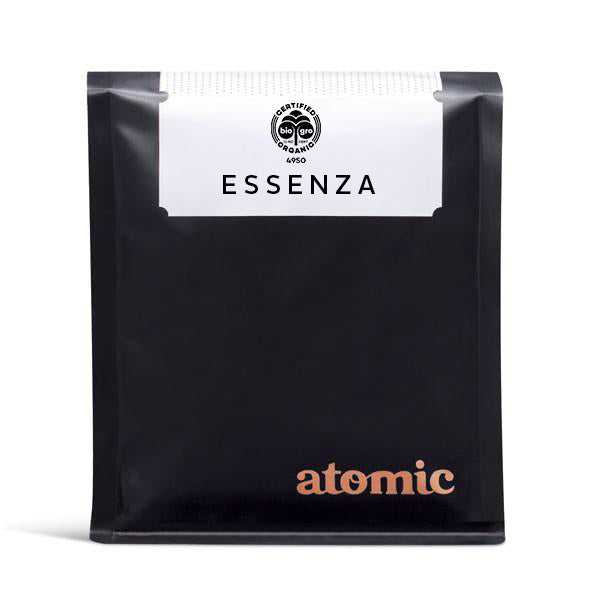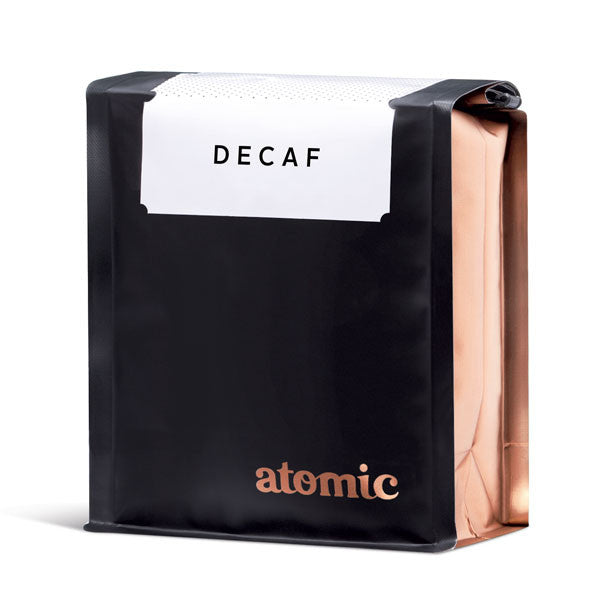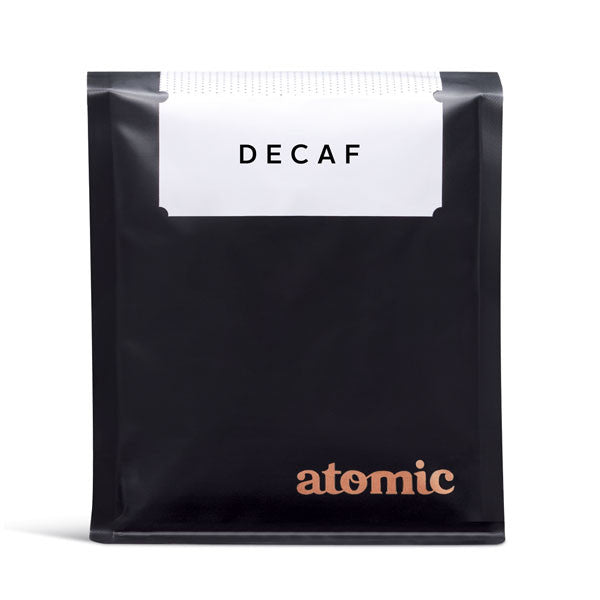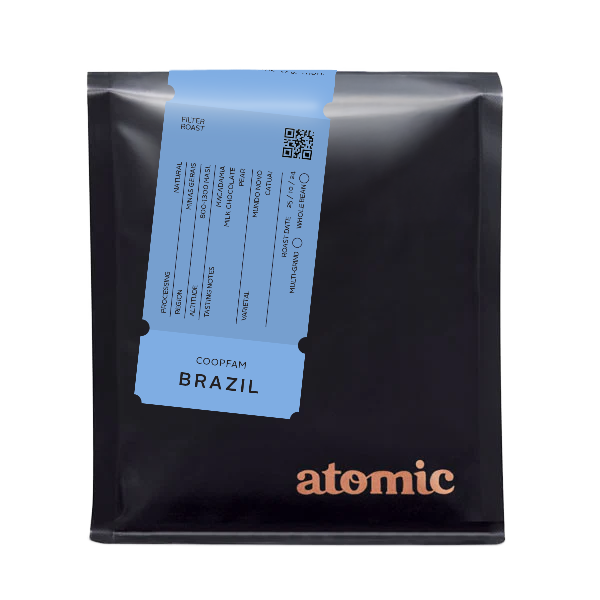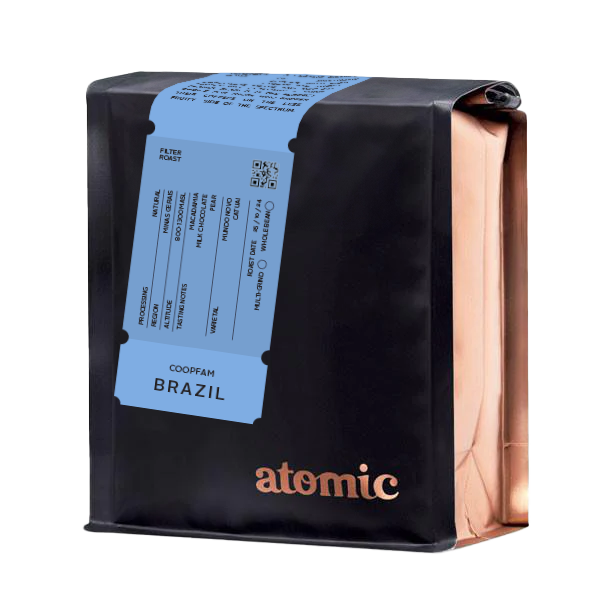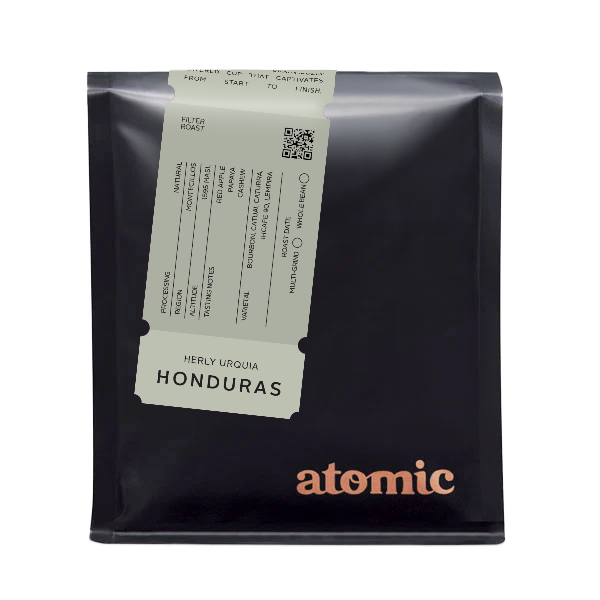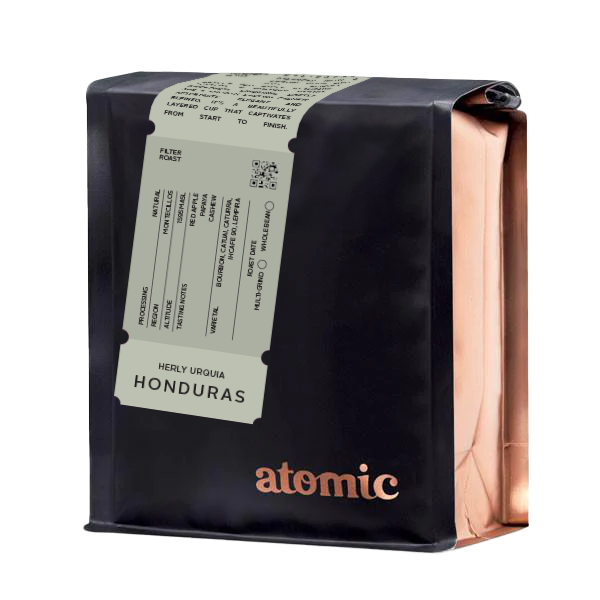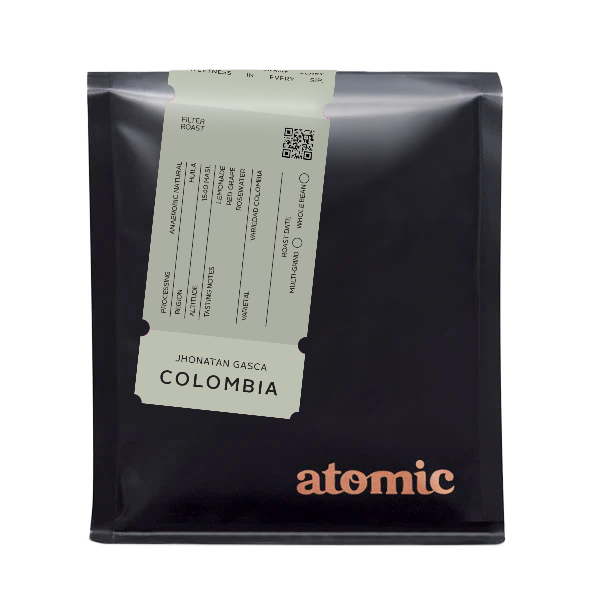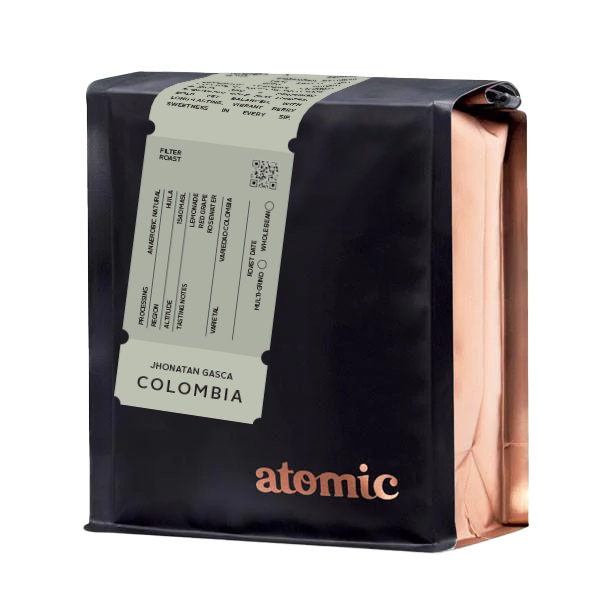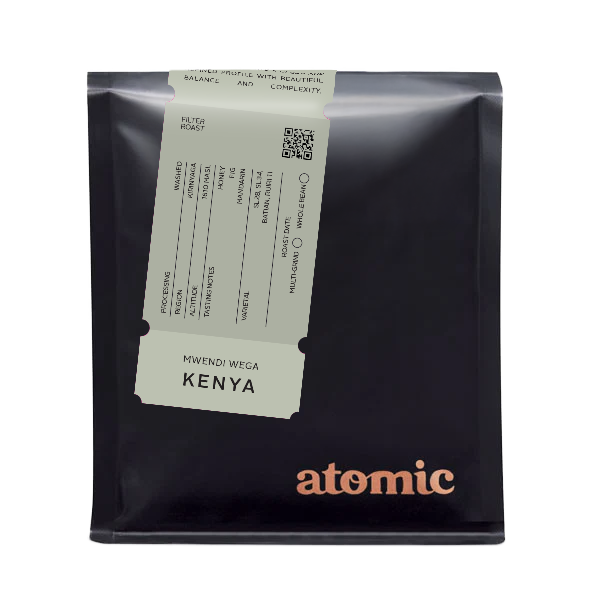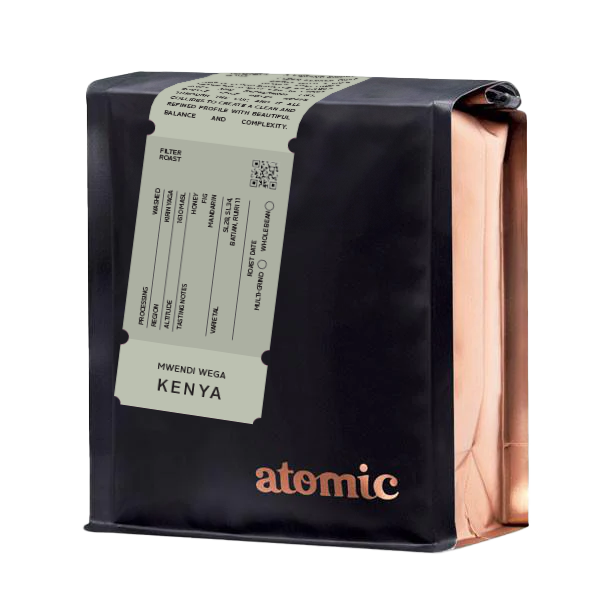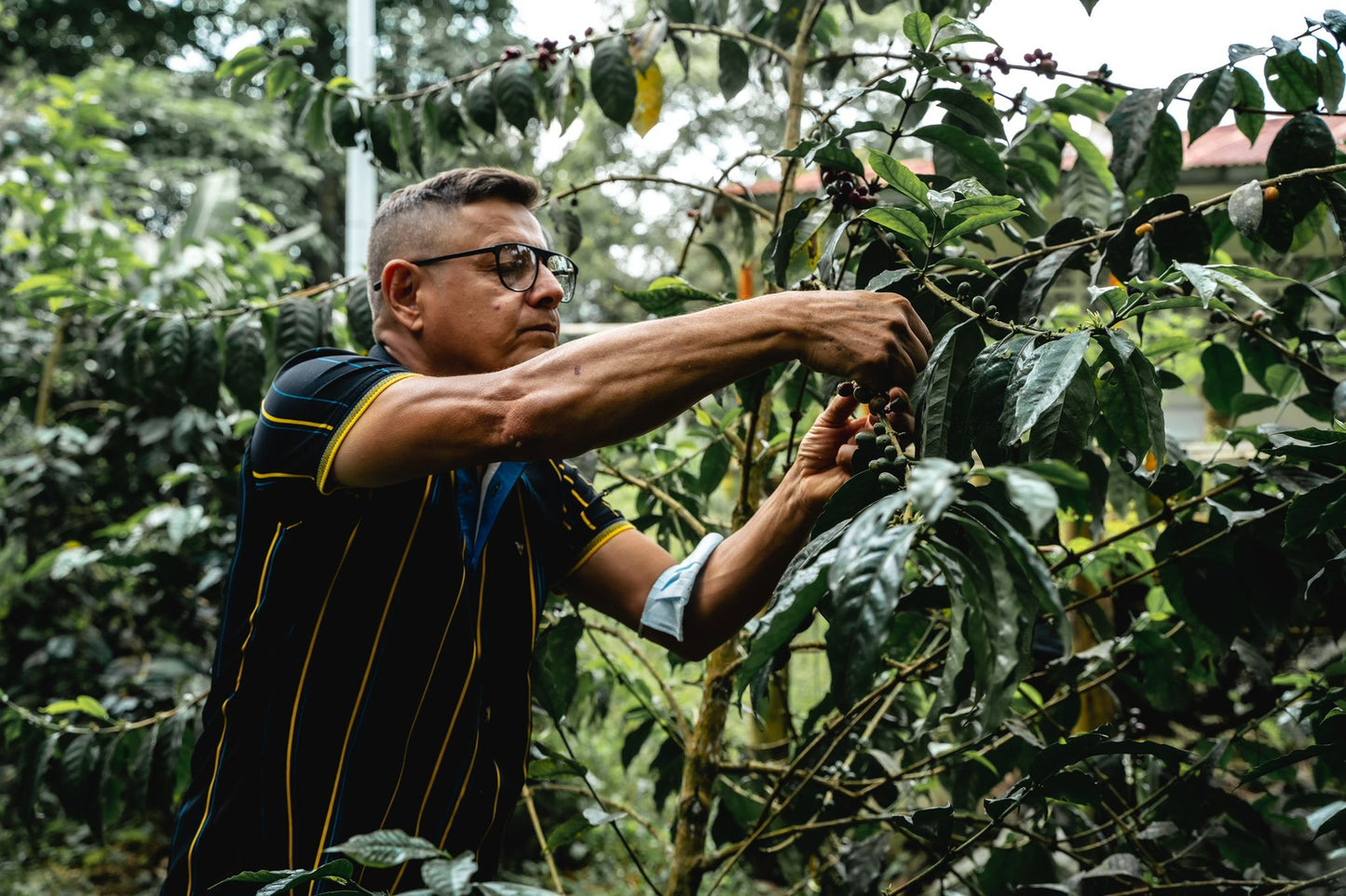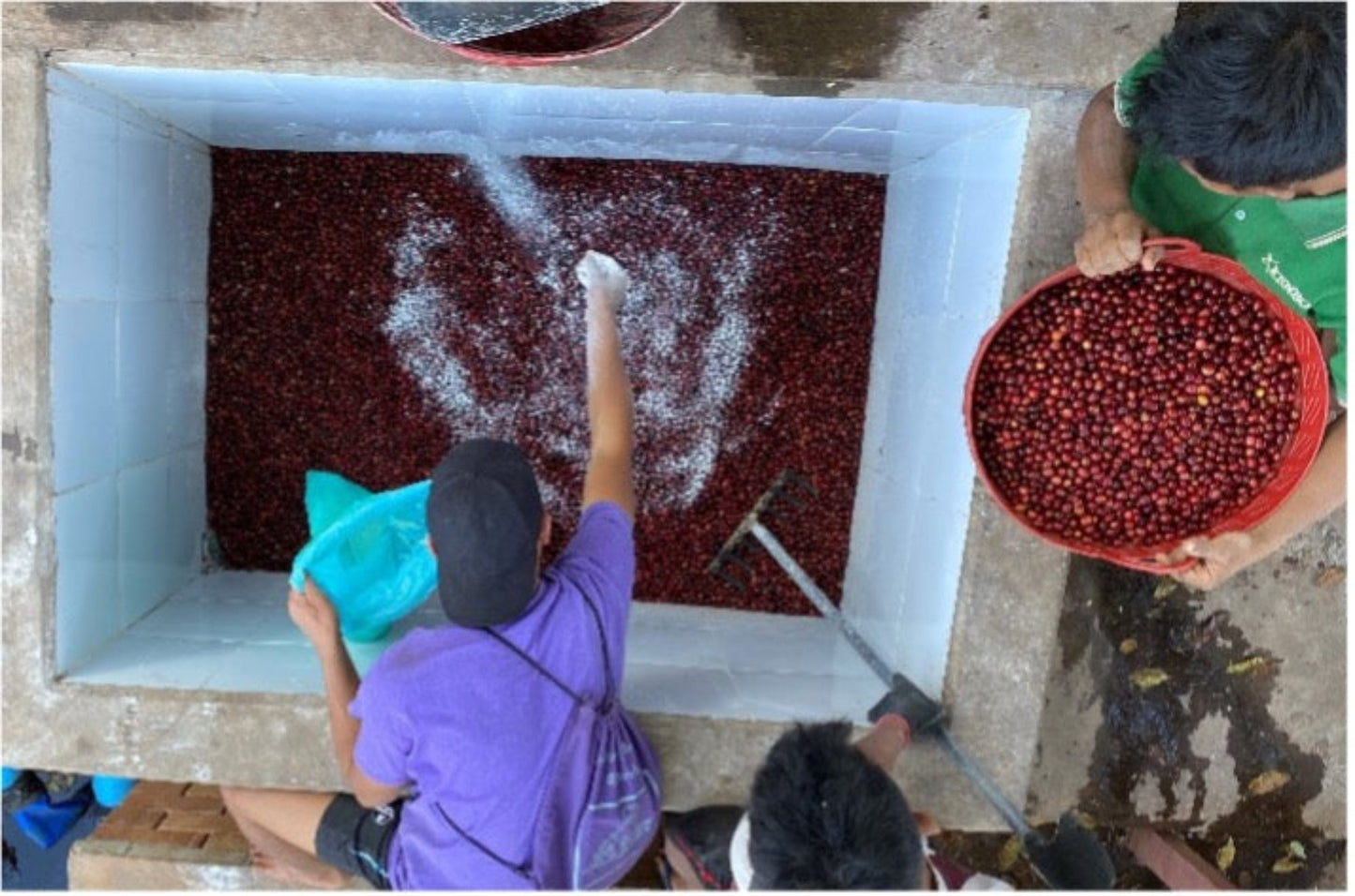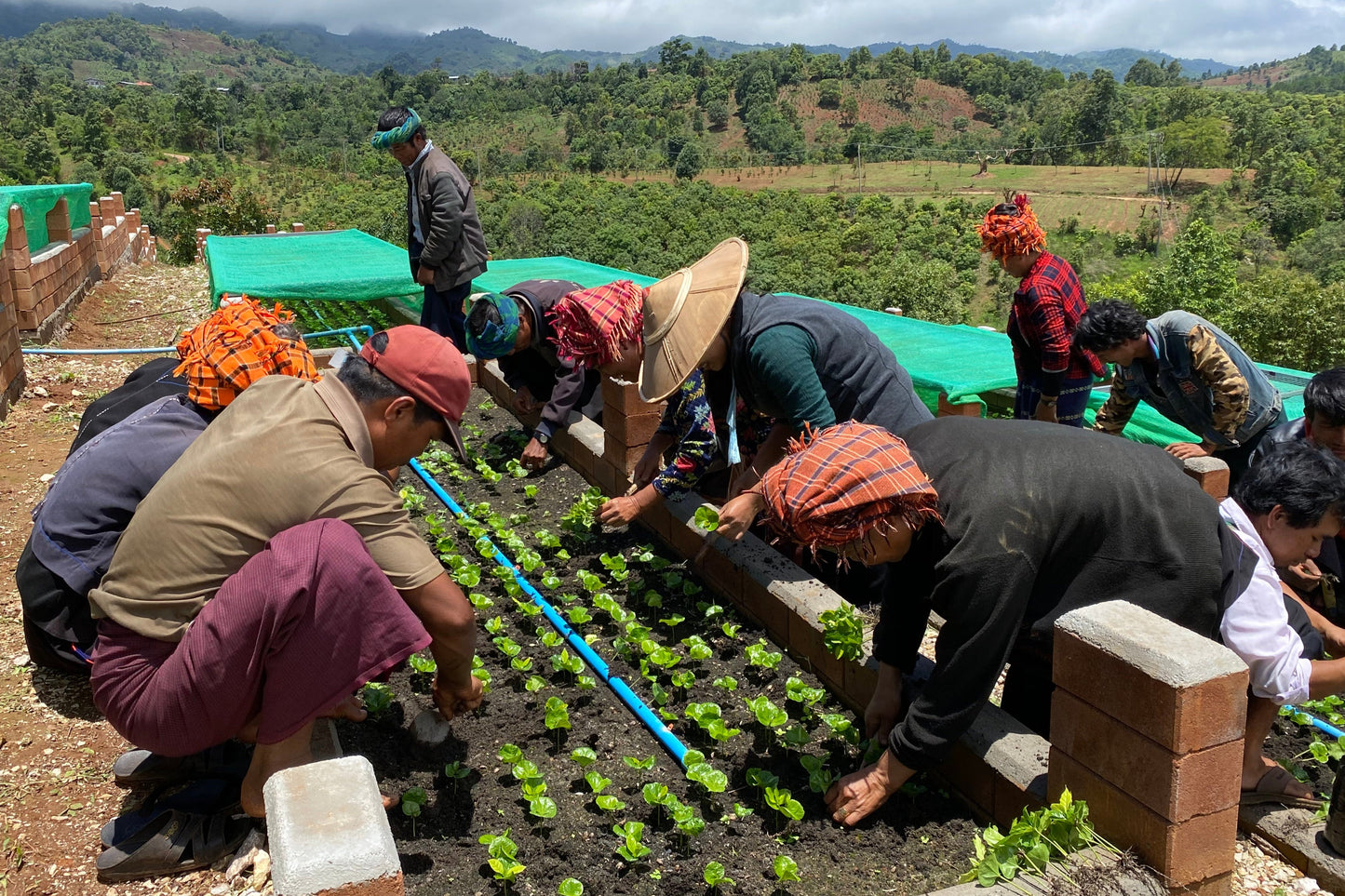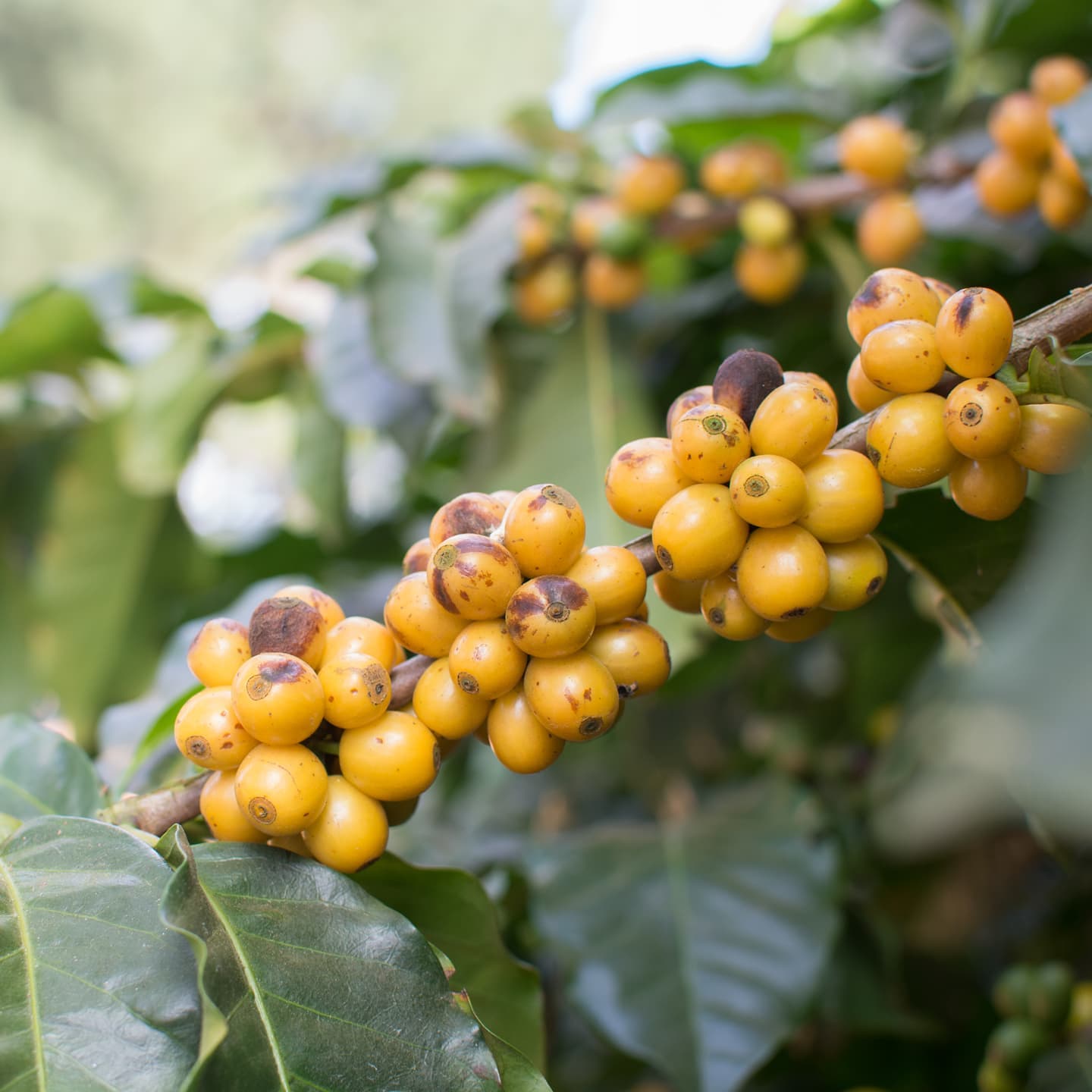
READ THE LABEL: VARIETY
Read the label is a series that breaks down the lingo & helps you choose the coffee that's right for you.
You’ve probably seen the word variety on a coffee bag before—maybe something like SL28, Caturra, or Heirloom. But what does it actually mean? And why should you care?
In short, coffee variety is kind of like the grape variety in wine. It refers to the specific type of coffee plant your beans came from. And just like Pinot Noir tastes different from Shiraz, different coffee varieties bring different flavours, aromas, and even textures to your cup. Some varieties are prized for their juicy acidity, others for their chocolatey sweetness. Some are super rare and delicate, while others are hardy workhorses that thrive in tough conditions. Variety plays a big role
in how your coffee tastes—and where and how it was grown.

variety 101
All coffee comes from the Coffea genus, but the two main species we drink are Arabica and Robusta.
Within Arabica, there are thousands of varieties. Some are the product of natural mutations through spontaneous crossbreeding; some are cultivars, i.e scientifically bred (for disease resistance, yield increase, etc); others are local heirloom types which are grown in very specific parts of the world.
Let's break down the different categories of arabica varieties:
Most arabica varieties stem from two original plants: Typica and Bourbon. Both originally from Ethiopia, where arabica is thought to have originated, and later taken to Yemen, and from there, shipped all over the world, via colonial trade routes. Following the Dutch, Typica journeyed to Indonesia and the Americas, while Bourbon was taken by the French to Reunion Island (then Bourbon Island), then later across Africa, and finally to Brazil and Central America.
Typica and Bourbon are the parents of most coffee varieties, and have both gone on to naturally mutate in their varied growing environments.
Examples: Pacas, Caturra, Maragogipe, Mundo Novo
Most arabica varieties stem from two original plants: Typica and Bourbon. Both originally from Ethiopia, where arabica is thought to have originated, and later taken to Yemen, and from there, shipped all over the world, via colonial trade routes. Following the Dutch, Typica journeyed to Indonesia and the Americas, while Bourbon was taken by the French to Reunion Island (then Bourbon Island), then later across Africa, and finally to Brazil and Central America.
Typica and Bourbon are the parents of most coffee varieties, and have both gone on to naturally mutate in their varied growing environments.
Examples: Pacas, Caturra, Maragogipe, Mundo Novo
‘Heirloom’ is a bit of a fodder word for coffee plants whose variety is hard to ascertain, but it’s mostly used to refer to Ethiopian coffee. There are over a thousand coffee varieties growing in Ethiopia (the birthplace of coffee), mostly in the wild and without traceability. As the name suggests, heirloom refers to plants that have been grown in a specific geographical area for generations.
Historically, Ethiopian coffee varieties gathered under the heirloom umbrella have been classified by regions (Sidamo, Yirgacheffe, Guji), but we’re moving away from this nomenclature and towards using ‘landrace’ to classify Ethiopian coffee varieties, which better describes the coffee’s adaptation within a particular geography.
Today, the Jimma Agricultural Research Centre works to improve identification and classification of unique Ethiopian landrace varieties, as well as developing new cultivars.
Some landrace varieties have been identified and isolated because of their incredible quality, and planted in new origins and terroirs. That's the case for Sudan Rume, an ancient landrace variety which is now more commonly found in Colombia. It's also the case of Geisha, one of the most prized arabica variety, which is thriving in Panama.
Examples: Gesha, Sudan Rume, Harrar, Sidamo, Yirgacheffe
‘Heirloom’ is a bit of a fodder word for coffee plants whose variety is hard to ascertain, but it’s mostly used to refer to Ethiopian coffee. There are over a thousand coffee varieties growing in Ethiopia (the birthplace of coffee), mostly in the wild and without traceability. As the name suggests, heirloom refers to plants that have been grown in a specific geographical area for generations.
Historically, Ethiopian coffee varieties gathered under the heirloom umbrella have been classified by regions (Sidamo, Yirgacheffe, Guji), but we’re moving away from this nomenclature and towards using ‘landrace’ to classify Ethiopian coffee varieties, which better describes the coffee’s adaptation within a particular geography.
Today, the Jimma Agricultural Research Centre works to improve identification and classification of unique Ethiopian landrace varieties, as well as developing new cultivars.
Some landrace varieties have been identified and isolated because of their incredible quality, and planted in new origins and terroirs. That's the case for Sudan Rume, an ancient landrace variety which is now more commonly found in Colombia. It's also the case of Geisha, one of the most prized arabica variety, which is thriving in Panama.
Examples: Gesha, Sudan Rume, Harrar, Sidamo, Yirgacheffe
Cultivars are coffee varieties that have been scientifically refined and engineered. It requires human intervention and equates to intentional breeding. The goal is to isolate desirable qualities in certain varieties, such as disease or draught resistance, high yielding potential, or overall cup quality.
Examples: SL28, SL34, Pacamara, Castillo, Catuai, Catimor, Variedad Colombia
Cultivars are coffee varieties that have been scientifically refined and engineered. It requires human intervention and equates to intentional breeding. The goal is to isolate desirable qualities in certain varieties, such as disease or draught resistance, high yielding potential, or overall cup quality.
Examples: SL28, SL34, Pacamara, Castillo, Catuai, Catimor, Variedad Colombia
Because most Arabica varieties originate from Typica and Bourbon, the species suffers from a real lack of diversity - 98.8% of varieties share genetic similarity. That makes them extremely vulnerable to pests and diseases, and new challenges caused by climate change.
Enter F1 Hybrids. Engineered by the World Coffee Research organisation, they are the result of crossing genetically distinct parents, creating first-generation hybrids. They aren’t genetically modified – pollen is manually transferred from one flower to another. One hundred F1 hybrids were created, then twenty were selected and released across Central America and Kenya. F1 hybrids are showing great results so far, scoring high for cup quality without the usual trade-off of fragility.
Examples: Centroamericano, Ruiru 11
Because most Arabica varieties originate from Typica and Bourbon, the species suffers from a real lack of diversity - 98.8% of varieties share genetic similarity. That makes them extremely vulnerable to pests and diseases, and new challenges caused by climate change.
Enter F1 Hybrids. Engineered by the World Coffee Research organisation, they are the result of crossing genetically distinct parents, creating first-generation hybrids. They aren’t genetically modified – pollen is manually transferred from one flower to another. One hundred F1 hybrids were created, then twenty were selected and released across Central America and Kenya. F1 hybrids are showing great results so far, scoring high for cup quality without the usual trade-off of fragility.
Examples: Centroamericano, Ruiru 11
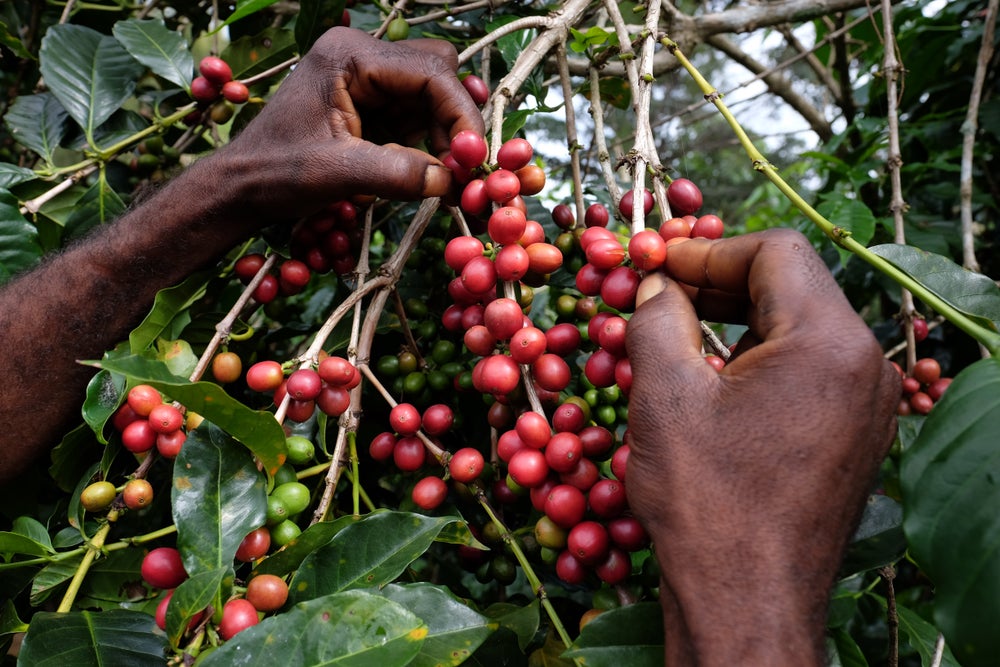
WHY VARIETY MATTERS
Variety doesn’t just affect flavour—it also impacts how the coffee is grown. Some varieties are more resistant to disease, others need specific altitudes or climates to thrive. That’s why producers choose varieties carefully, balancing flavour potential with sustainability and yield.
At Atomic, we select both classic and experimental varieties, and explore the spectrum of arabica. We love showcasing how variety, combined with origin and processing, creates a unique flavour story in every cup.
Some common coffee varieties include:
BOURBON
One of the oldest and most widespread varieties, Bourbon (pronounced boor-bon, not like the whiskey) is sweet, balanced, with red fruit notes and bright acidity. It’s grown all over Latin America and parts of Africa, and there are different types, based on the colour of the coffee cherries (Red, Yellow & Pink)
Go for this if… you like smooth, sweet coffees with a complex acidity.
ETHIOPIAN HEIRLOOM / LANDRACE
“Heirloom” is a catch-all term for the wild and diverse coffee varieties native to Ethiopia. These coffees are often floral, tea-like, and bursting with fruit. No two heirloom coffees are exactly the same, which makes them super exciting.
Go for this if… you’re into delicate, floral, and complex cups.
SL28 & SL34
Originally developed in Kenya, these varieties are known for their vibrant acidity, juicy body, and complex fruit notes—think blackcurrant, citrus, and florals. SL28 in particular is a favourite among coffee judges and baristas alike.
Go for this if… you love bright, fruit-forward coffees with a winey edge.
CATURRA
The result of a natural mutation of the Bourbon variety in Brazil, it's a high-yielding dwarf variety with great cup quality, which has been used for creating many cultivars, like Castillo, Catuai or Catimor.
Go for this if… you love balanced and sweet cups, with bright citrus acidity.
CATUAI
Catuai is a hybrid of Mundo Novo and Caturra, usually grown in Brazil. This cultivar offers juicy citric characteristics, balanced with chocolate undertones. The plant’s name comes from the indigenous Tupi-Guarani language in Brazil, meaning, ‘very good’. It's now grown across Central America.
Go for this if… you love a sweet, nutty, chocolatey cup.
GEISHA
The rockstar of the coffee world. Originally from Ethiopia but made famous in Panama, Gesha is known for its jasmine aroma, silky body, and tropical fruit notes. It’s rare, expensive, and often reserved for special releases.
Go for this if… you like delicate, floral, complex coffees.
Curious to taste the difference? Explore our current line-up to find the coffee that's right for you.
MORE READING
Read the label is a series that breaks down the lingo & helps you choose the coffee that's right for...
READ THE LABEL: PROCESSING
Read the label is a series that breaks down the lingo & helps you choose the coffee that's right for...
ORIGIN SERIES: MYANMAR
We journey to the misty highlands of Myanmar, a Southeast Asian country whose specialty coffee scene is still emerging but...

